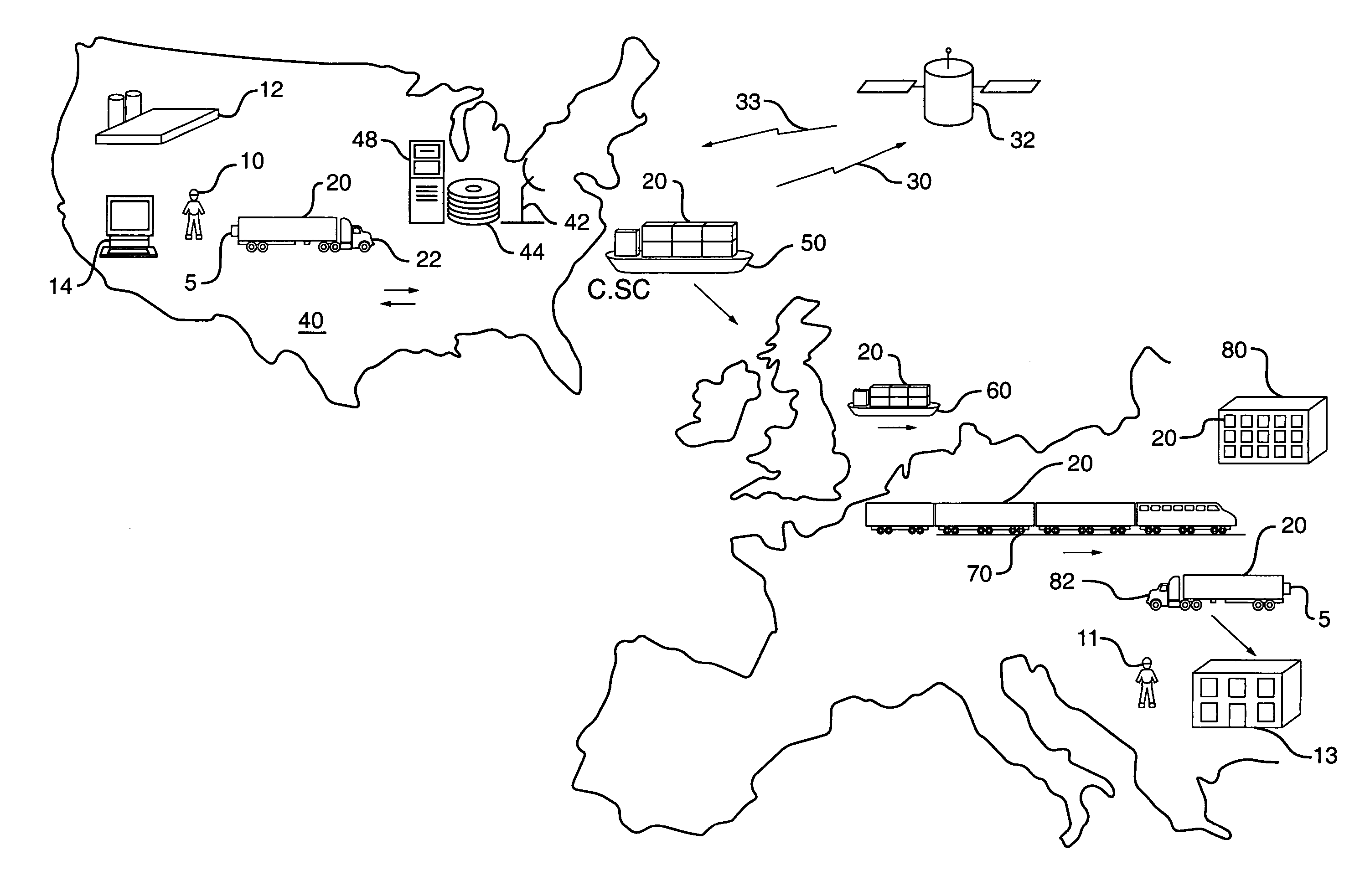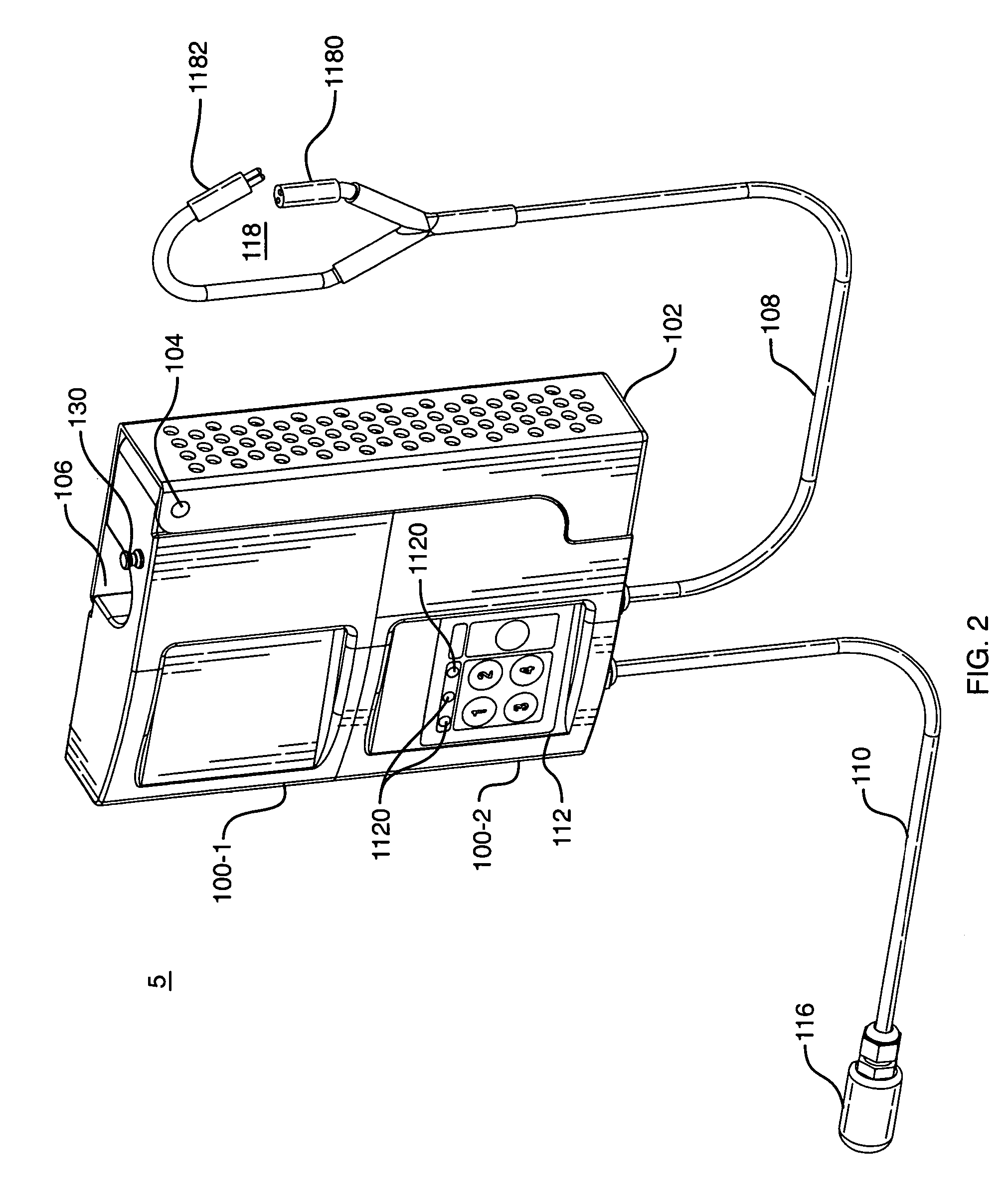Reusable self contained electronic device providing in-transit cargo visibility
- Summary
- Abstract
- Description
- Claims
- Application Information
AI Technical Summary
Benefits of technology
Problems solved by technology
Method used
Image
Examples
Embodiment Construction
[0049]A description of preferred embodiments of the invention follows.
[0050]FIG. 1 illustrates a typical sequence of events that occur in multimodal transport of goods by container. In this example, a shipper 10 located near Austin, Tex. in the United States is a manufacturer and wholesaler of personal computer subassemblies. The shipper 10 wants to use carriers, freight forwarders, or other service providers to ship a container 20 filled with goods at the lowest possible cost. These service providers normally supply the container 20 to the shipper 10 as a cost of doing business.
[0051]Here, a customer 11 in a destination location 13 near Frankfurt, Germany has placed an order for computer components. The customer 11 is also referred to herein as the receiver 11 of the container 20. The shipper 10 places the goods in the container 20 at a location such as his Texas warehouse 12. The shipper 10 here then attaches an electronic tracking and security device 5, as will be described in gr...
PUM
 Login to View More
Login to View More Abstract
Description
Claims
Application Information
 Login to View More
Login to View More - R&D
- Intellectual Property
- Life Sciences
- Materials
- Tech Scout
- Unparalleled Data Quality
- Higher Quality Content
- 60% Fewer Hallucinations
Browse by: Latest US Patents, China's latest patents, Technical Efficacy Thesaurus, Application Domain, Technology Topic, Popular Technical Reports.
© 2025 PatSnap. All rights reserved.Legal|Privacy policy|Modern Slavery Act Transparency Statement|Sitemap|About US| Contact US: help@patsnap.com



